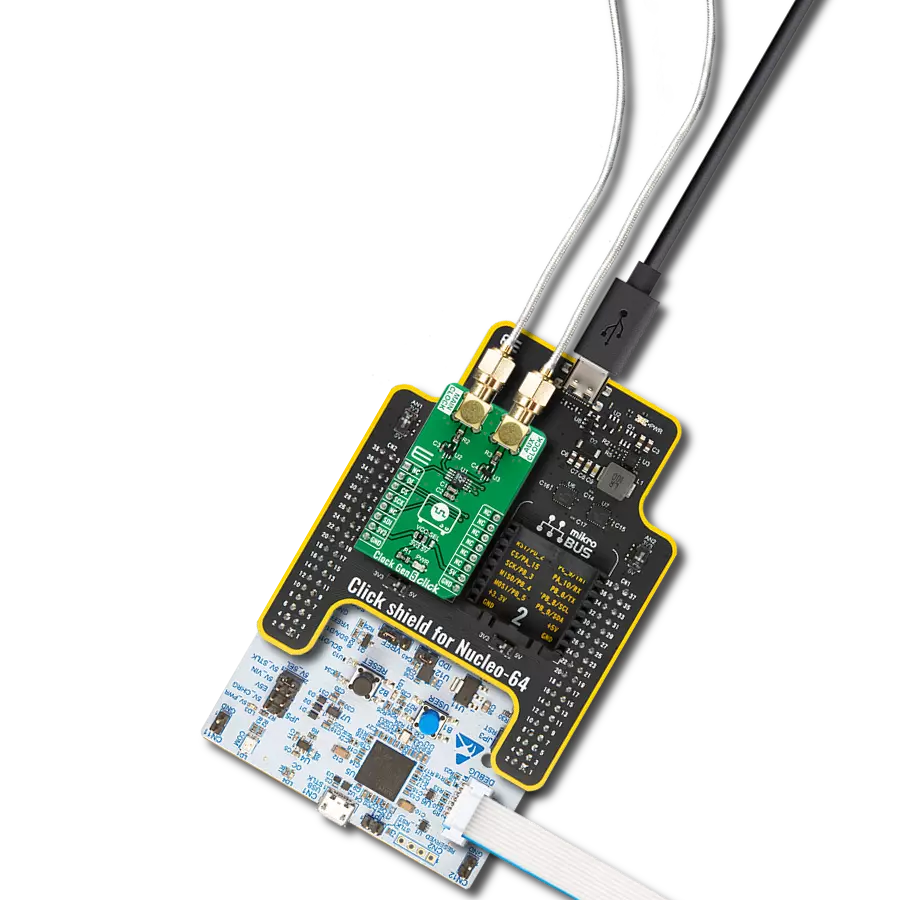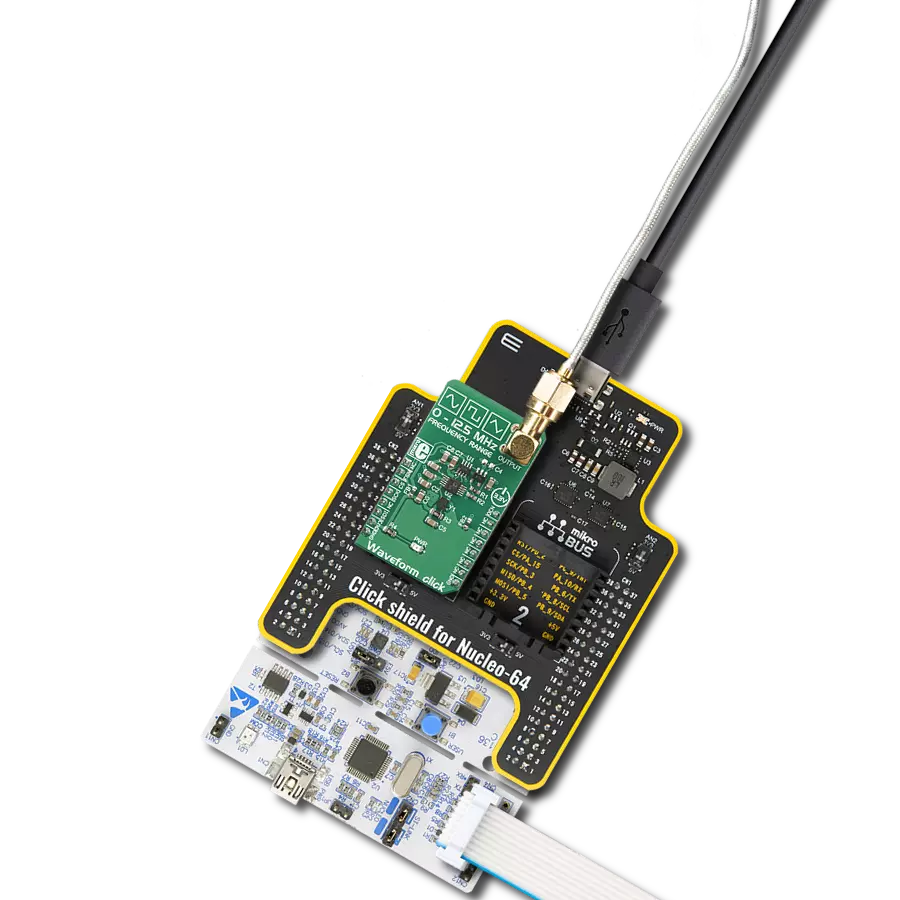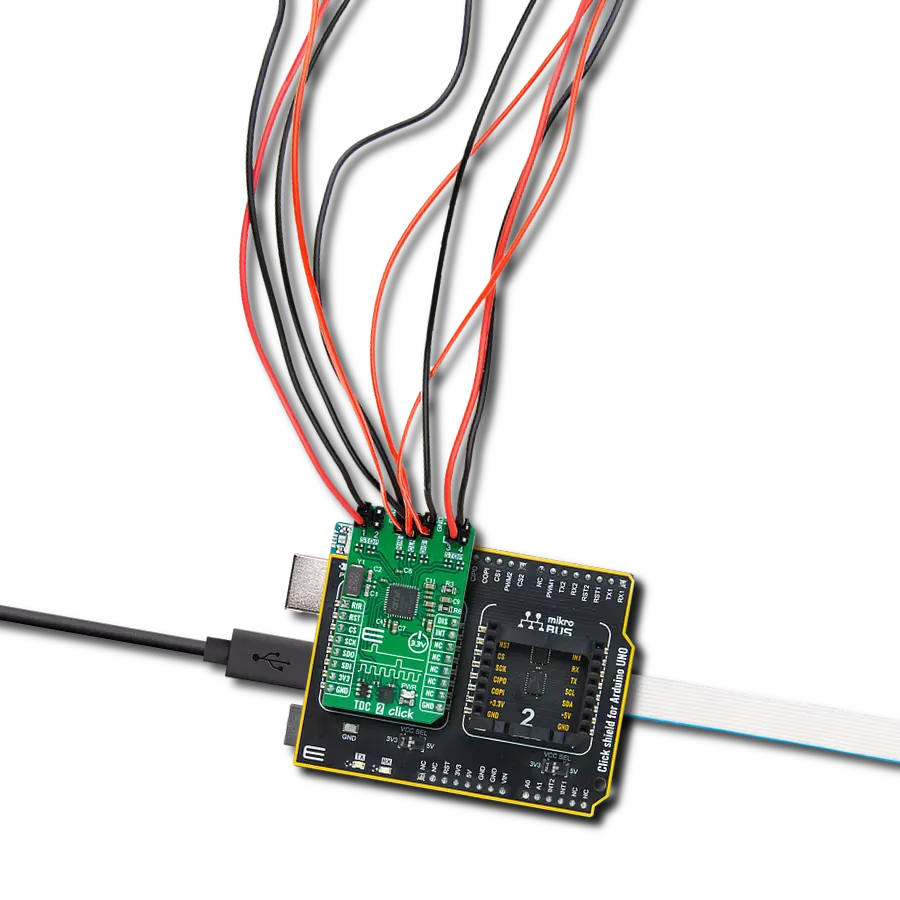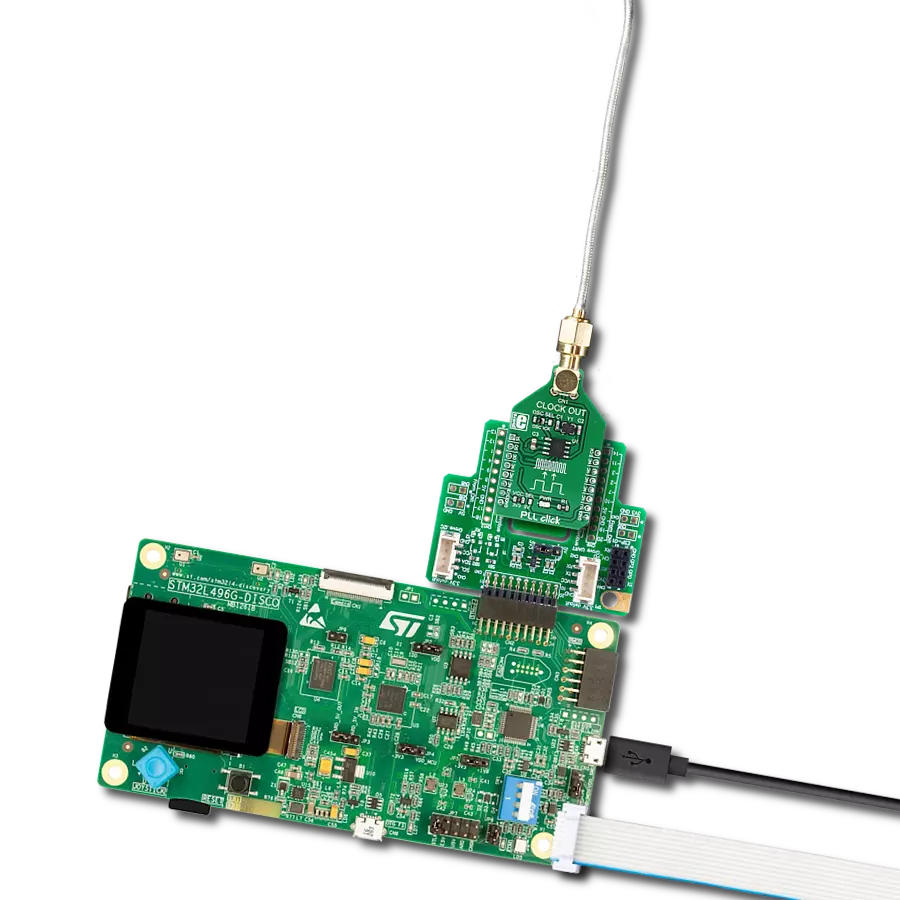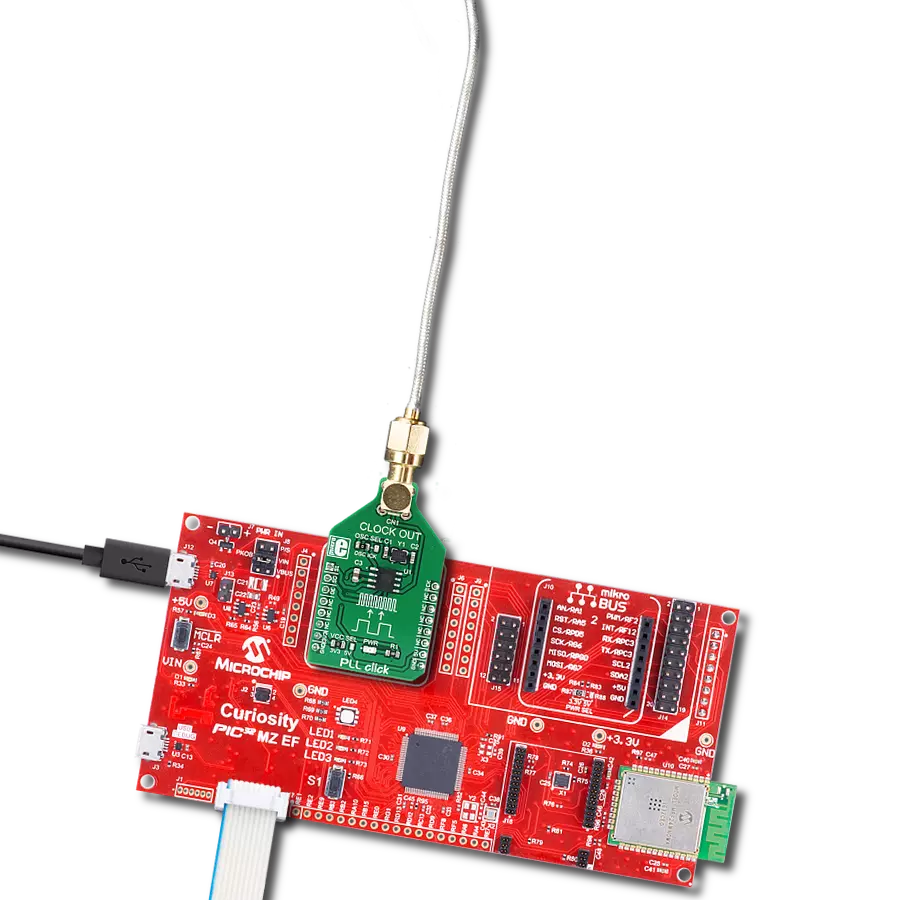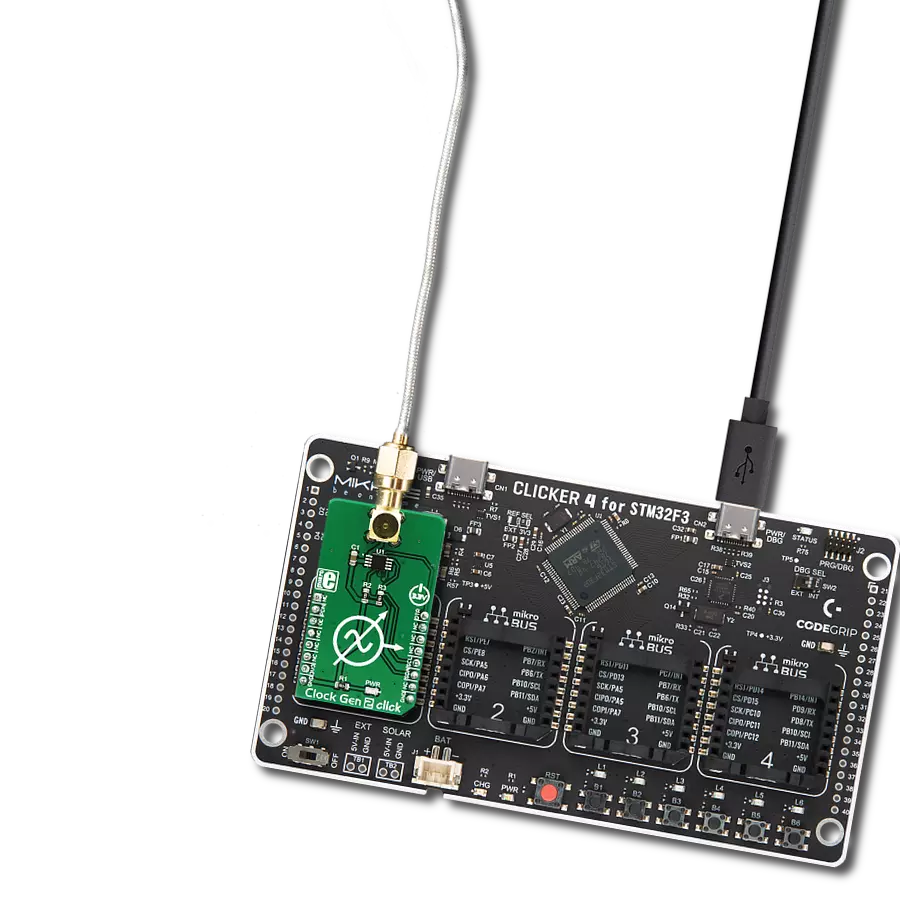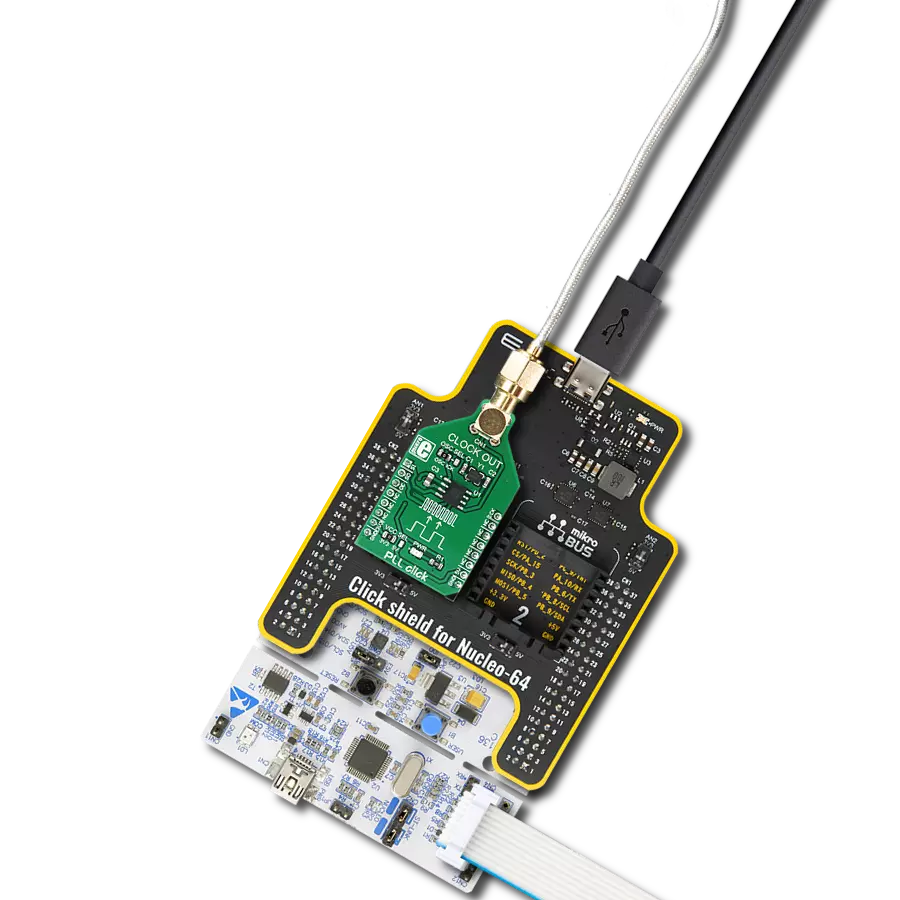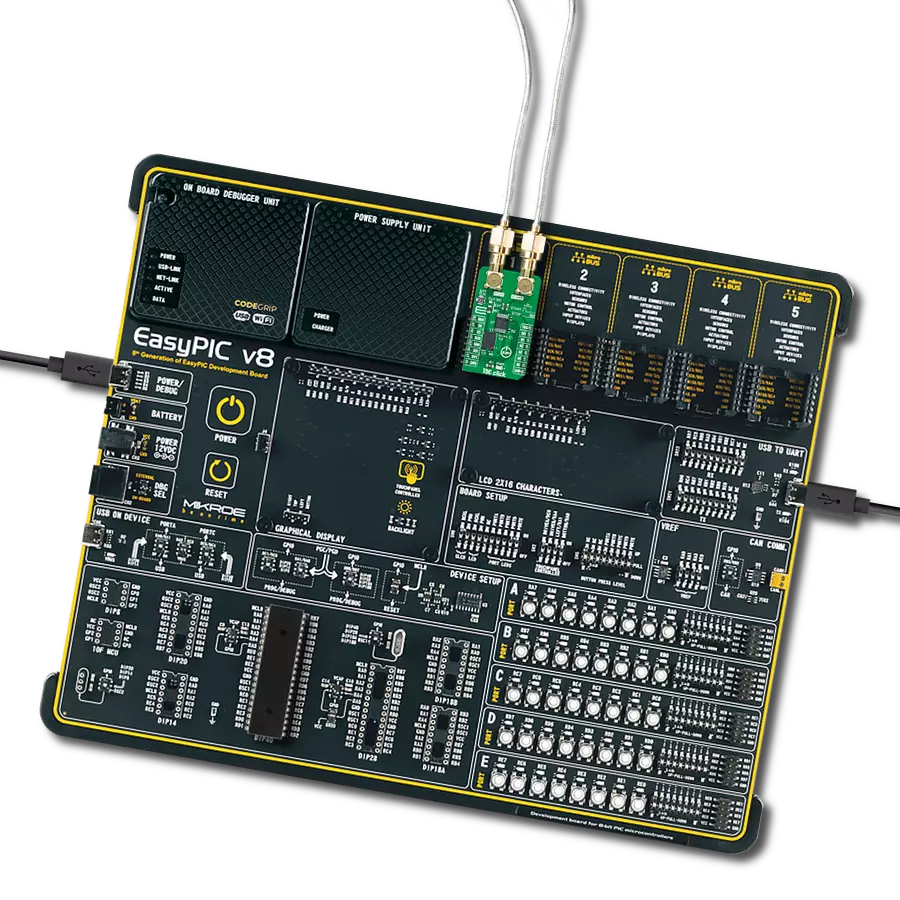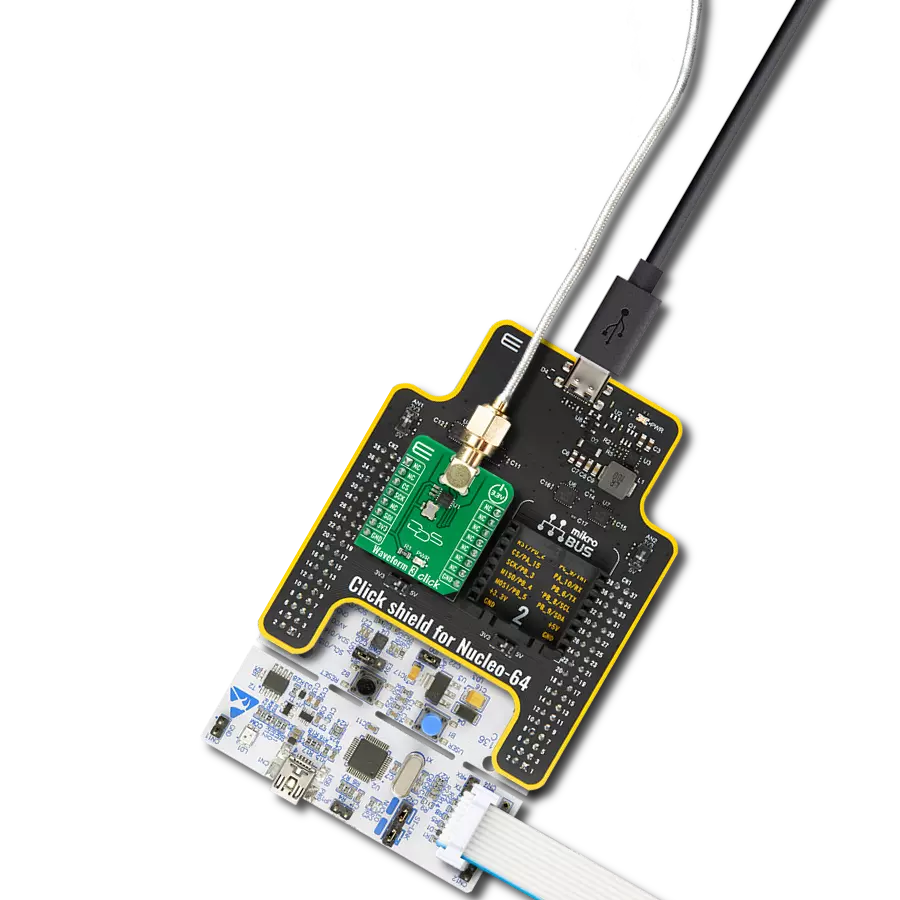Integrate an advanced clock generator into your solution and witness the transformative impact on timing control
A
A
Hardware Overview
How does it work?
Clock Gen 4 Click is based on the CS2200-CP, an analog PLL architecture comprised of a Delta-Sigma fractional-N frequency synthesizer from Cirrus Logic. The Delta-Sigma fractional-N frequency synthesizer has a high resolution for Input/Output clock ratios, low phase noise, a wide range of output frequencies, and the ability to tune to a new frequency quickly. This synthesizer multiplies the timing reference clock by the value of N to generate a stable and low-jitter PLL clock on the connector labeled PLL Clock. This Click board™ also has another connector marked as AUX Clock that outputs a buffered version of one of the input/output clocks or a status signal, depending on register configuration. The analog PLL-based frequency synthesizer uses a low-jitter timing reference clock
as a time and phase reference for the internal voltage-controlled oscillator (VCO). The phase comparator compares the fractional-N divided clock with the original timing reference and generates a control signal filtered by the internal loop filter to generate the VCO’s control voltage that sets its output frequency. The Delta-Sigma modulator modulates the loop integer divide ratio to get the desired fractional ratio between the reference clock and the VCO output. This allows fast lock times for various output frequencies without external filter components. Clock Gen 4 Click provides the possibility of using both I2C and SPI interfaces with a maximum frequency of 100kHz for I2C and 6MHz for SPI communication. The selection can be performed by positioning SMD jumpers labeled
COMM SEL to an appropriate position. Note that all the jumpers must be placed on the same side, or the Click board™ may become unresponsive. While the I2C interface is selected, the CS2200-CP allows the choice of the least significant bit (LSB) of its I2C slave address. This can be done by using the SMD jumper labeled as ADDR SEL. This Click board™ can only be operated with a 3.3V logic voltage level. The board must perform appropriate logic voltage level conversion before using MCUs with different logic levels. However, the Click board™ comes equipped with a library containing functions and an example code that can be used as a reference for further development.
Features overview
Development board
Arduino UNO is a versatile microcontroller board built around the ATmega328P chip. It offers extensive connectivity options for various projects, featuring 14 digital input/output pins, six of which are PWM-capable, along with six analog inputs. Its core components include a 16MHz ceramic resonator, a USB connection, a power jack, an
ICSP header, and a reset button, providing everything necessary to power and program the board. The Uno is ready to go, whether connected to a computer via USB or powered by an AC-to-DC adapter or battery. As the first USB Arduino board, it serves as the benchmark for the Arduino platform, with "Uno" symbolizing its status as the
first in a series. This name choice, meaning "one" in Italian, commemorates the launch of Arduino Software (IDE) 1.0. Initially introduced alongside version 1.0 of the Arduino Software (IDE), the Uno has since become the foundational model for subsequent Arduino releases, embodying the platform's evolution.
Microcontroller Overview
MCU Card / MCU
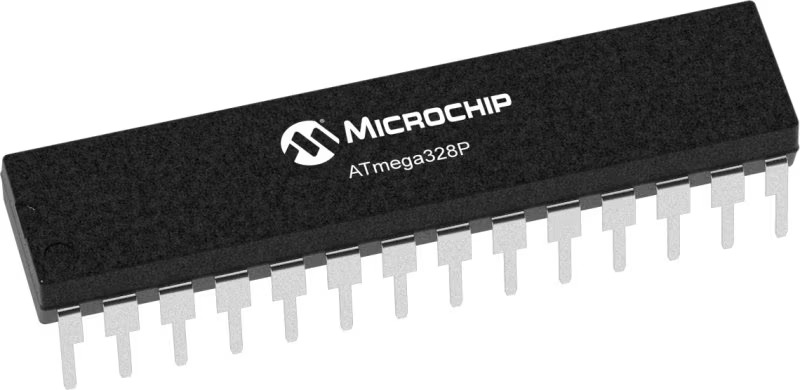
Architecture
AVR
MCU Memory (KB)
32
Silicon Vendor
Microchip
Pin count
28
RAM (Bytes)
2048
You complete me!
Accessories
Click Shield for Arduino UNO has two proprietary mikroBUS™ sockets, allowing all the Click board™ devices to be interfaced with the Arduino UNO board without effort. The Arduino Uno, a microcontroller board based on the ATmega328P, provides an affordable and flexible way for users to try out new concepts and build prototypes with the ATmega328P microcontroller from various combinations of performance, power consumption, and features. The Arduino Uno has 14 digital input/output pins (of which six can be used as PWM outputs), six analog inputs, a 16 MHz ceramic resonator (CSTCE16M0V53-R0), a USB connection, a power jack, an ICSP header, and reset button. Most of the ATmega328P microcontroller pins are brought to the IO pins on the left and right edge of the board, which are then connected to two existing mikroBUS™ sockets. This Click Shield also has several switches that perform functions such as selecting the logic levels of analog signals on mikroBUS™ sockets and selecting logic voltage levels of the mikroBUS™ sockets themselves. Besides, the user is offered the possibility of using any Click board™ with the help of existing bidirectional level-shifting voltage translators, regardless of whether the Click board™ operates at a 3.3V or 5V logic voltage level. Once you connect the Arduino UNO board with our Click Shield for Arduino UNO, you can access hundreds of Click boards™, working with 3.3V or 5V logic voltage levels.
Used MCU Pins
mikroBUS™ mapper
Take a closer look
Click board™ Schematic

Step by step
Project assembly
Software Support
Library Description
This library contains API for Clock Gen 4 Click driver.
Key functions:
void clockgen4_dev_ctl ( uint8_t dev_ctl );- Function is used to write to Device Control register in order to apply settings.void clockgen4_dev_cfg ( uint8_t dev_cfg );- Function is used to write to Device Configuration 1 register in order to apply settings.uint32_t clockgen4_set_ratio ( float ratio );- Function is used to set the ratio between the output signal and the input clock.
Open Source
Code example
The complete application code and a ready-to-use project are available through the NECTO Studio Package Manager for direct installation in the NECTO Studio. The application code can also be found on the MIKROE GitHub account.
/*!
* @file main.c
* @brief ClockGen4 Click example
*
* # Description
* This example demonstrates the use of Clock Gen 4 Click which is based on CS2200-CP for changing the channel clock. The CS2200-CP is an extremely
* versatile system clocking device that utilizes a programmable phase lock loop. The CS2200-CP is based on an analog PLL architecture and this
* architecture allows for frequency synthesis and clock generation from a stable reference clock. The CS2200-CP supports both I²C and SPI for full software control.
*
* The demo application is composed of two sections :
*
* ## Application Init
* Initializes I2C and SPI, sets CS pin as output and starts to write log, applies default settings and adjusted ratio to obtain a frequency.
*
* ## Application Task
* Clock Gen 4 Click is used in this example to generate and change the clock on the output channel.
*
* @author Jelena Milosavljevic
*
*/
#include "board.h"
#include "log.h"
#include "clockgen4.h"
static clockgen4_t clockgen4;
static log_t logger;
uint8_t com_itfc = 0;
void application_init ( void ){
log_cfg_t log_cfg; /**< Logger config object. */
clockgen4_cfg_t clockgen4_cfg; /**< Click config object. */
/**
* Logger initialization.
* Default baud rate: 115200
* Default log level: LOG_LEVEL_DEBUG
* @note If USB_UART_RX and USB_UART_TX
* are defined as HAL_PIN_NC, you will
* need to define them manually for log to work.
* See @b LOG_MAP_USB_UART macro definition for detailed explanation.
*/
LOG_MAP_USB_UART( log_cfg );
log_init( &logger, &log_cfg );
log_info( &logger, " Application Init " );
Delay_ms ( 100 );
log_printf( &logger, "---------------------" );
log_printf( &logger, " Clock Gen 4 Click " );
log_printf( &logger, "---------------------" );
// Click initialization.
clockgen4_cfg_setup( &clockgen4_cfg );
CLOCKGEN4_MAP_MIKROBUS( clockgen4_cfg, MIKROBUS_1 );
err_t init_flag = clockgen4_init( &clockgen4, &clockgen4_cfg );
if ( ( I2C_MASTER_ERROR == init_flag ) || ( SPI_MASTER_ERROR == init_flag ) ) {
log_error( &logger, " Application Init Error. " );
log_info( &logger, " Please, run program again... " );
for ( ; ; );
}
clockgen4_default_cfg ( &clockgen4 );
log_info( &logger, " Application Task " );
Delay_ms ( 100 );
}
void application_task ( void ){
clockgen4_dev_ctl ( &clockgen4, CLOCKGEN4_AUX_OUT_DIS | CLOCKGEN4_CLK_OUT_EN );
log_printf( &logger, " PLL Clock \r\n" );
log_printf( &logger, " output enabled! \r\n" );
log_printf( &logger, "---------------------\r\n" );
Delay_ms ( 1000 );
clockgen4_dev_ctl ( &clockgen4, CLOCKGEN4_AUX_OUT_EN | CLOCKGEN4_CLK_OUT_DIS );
log_printf( &logger, " AUX Clock \r\n" );
log_printf( &logger, " output enabled! \r\n" );
log_printf( &logger, "---------------------\r\n" );
Delay_ms ( 1000 );
}
int main ( void )
{
/* Do not remove this line or clock might not be set correctly. */
#ifdef PREINIT_SUPPORTED
preinit();
#endif
application_init( );
for ( ; ; )
{
application_task( );
}
return 0;
}
// ------------------------------------------------------------------------ END
Additional Support
Resources
Category:Clock generator




















